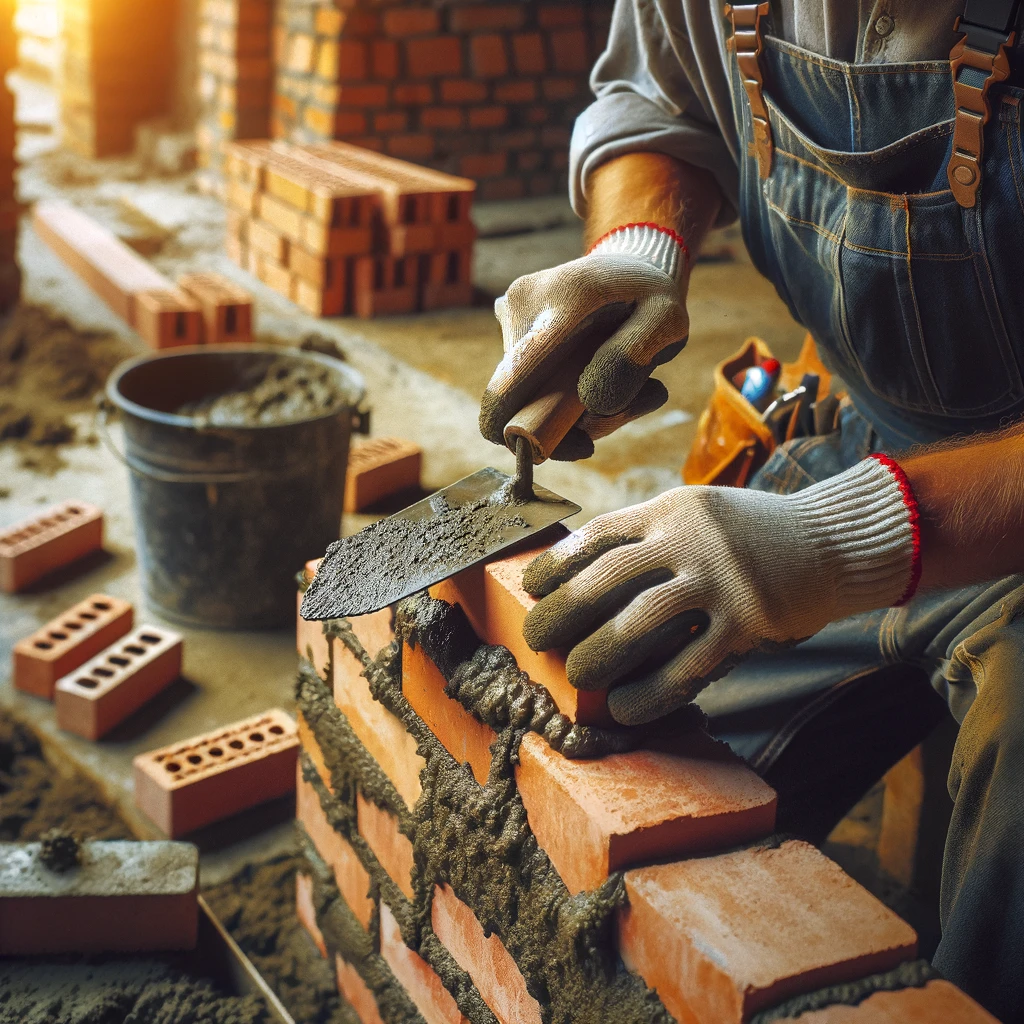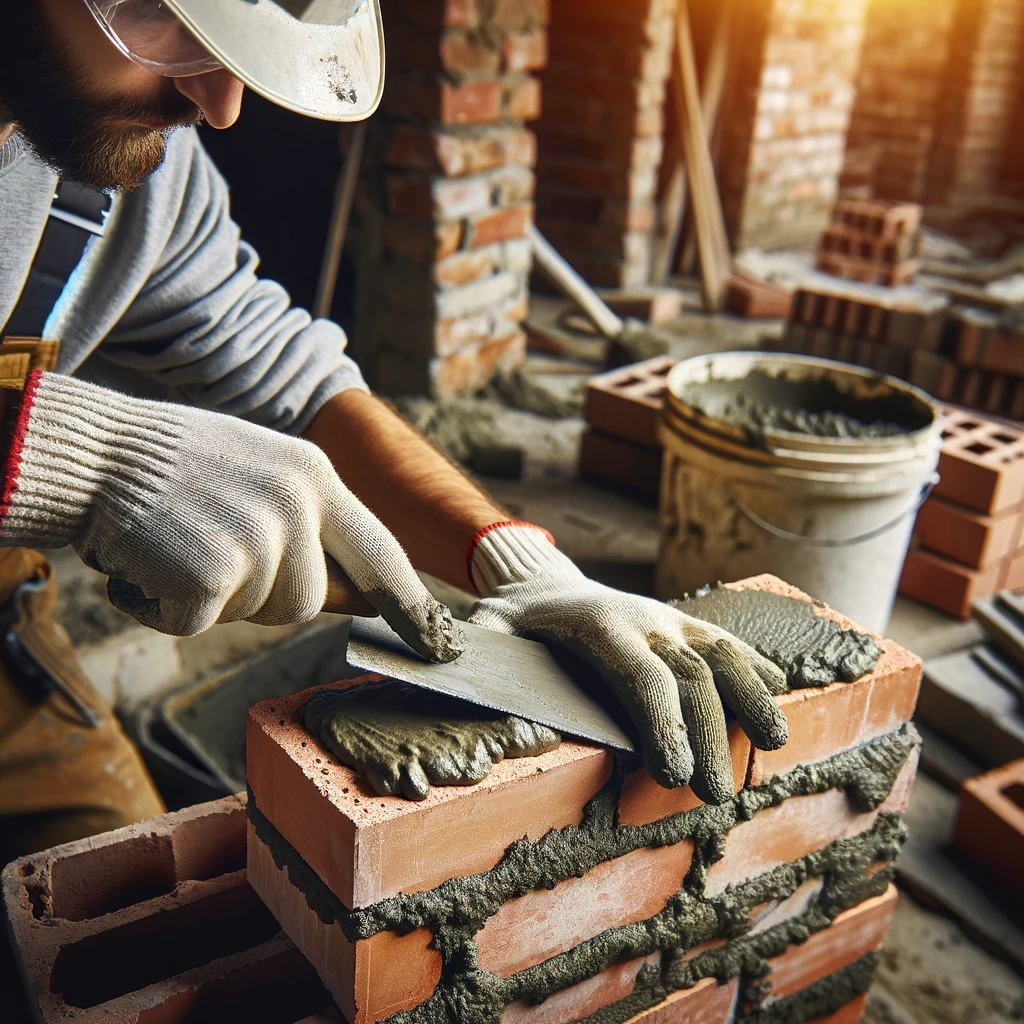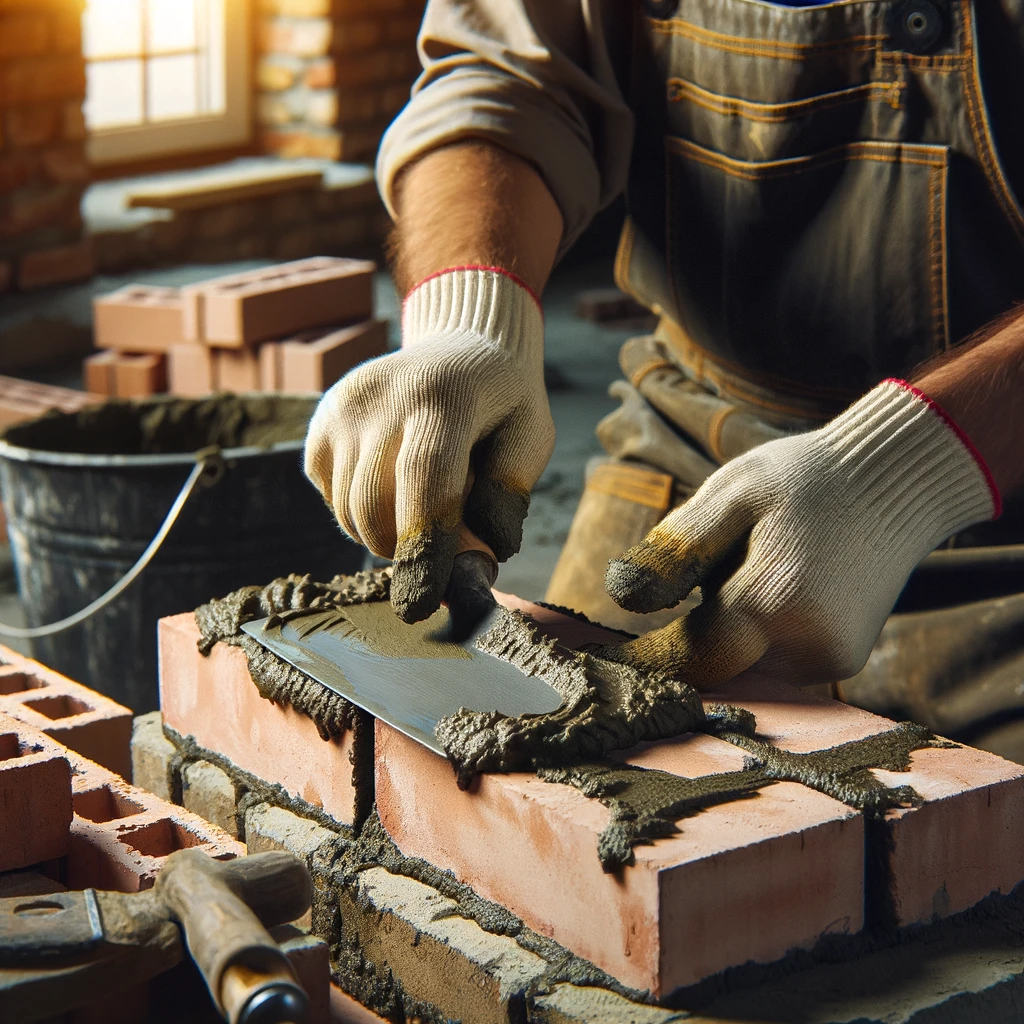Introduction to Buttering Bricks
Have you ever wondered why your bricks didn’t adhere as solidly as you wanted them to?
Or why your walls weren’t as sturdy or as uniform as you’d imagined?
Well, the answer may lie in a simple yet vital process known as buttering.
Widely used in the world of masonry, buttering plays a significant role in holding bricks together and shaping the overall quality of your brickwork. Yet, a surprising number of bricklayers either overlook this process or don’t fully understand it.
Don’t worry though – together, we’ll explore everything about this key bricklaying technique.
In this article, we’ll cover the ins and outs of buttering in bricklaying, from its definition, importance, and types to the tools required and common mistakes to avoid.
By the end, you’ll gain a richer appreciation for the impact buttering has on the strength, stability, and aesthetic appeal of your brick structures.
So, ready to get ‘buttering’? Let’s rock and roll!
Table of Contents
Understanding Buttering Bricks in Bricklaying

Definition of Buttering
Buttering in bricklaying is the process where mortar is applied to the side or end of a brick. This ensures a solid, even bond between bricks in a wall.
Why Buttering is Important
Buttering is crucial for several reasons:
- Adhesion: Creates a strong bond between bricks.
- Stability: Ensures the structural integrity of the wall.
- Weather Resistance: Prevents water penetration.
- Alignment: Helps in achieving a uniform and even wall surface.
Types of Buttering
Full Buttering
In full buttering, mortar is applied to the entire face of the brick. This is often used in structures that require maximum strength.
Partial Buttering
In partial buttering, mortar is applied only to certain parts of the brick, usually the edges. This method is quicker but offers less strength compared to full buttering.
Steps in Buttering Bricks
- Preparation: Ensure the bricks and mortar are ready. The mortar should have the right consistency.
- Application: Using a trowel, scoop up some mortar.
- Spreading: Spread the mortar evenly across the brick face. Ensure full coverage.
- Setting: Place the buttered brick onto the wall and press firmly.
Common Mistakes to Avoid
- Too Much Mortar: Can lead to mortar squeezing out and creating uneven joints.
- Too Little Mortar: Can result in weak bonds and gaps.
- Incorrect Consistency: Mortar that’s too dry or too wet will not bond well.
Tools Needed for Buttering
| Tool | Description |
|---|---|
| Trowel | Used for scooping and spreading mortar. |
| Mortar Board | A flat surface to hold and mix mortar. |
| Jointers | Tools to shape the mortar joints. |
The Buttered Brick Concept

What Buttered Brick Means
A buttered brick is simply a brick that has been applied with mortar, following the buttering process. The amount of mortar used for buttering may vary depending on the type of buttering done – full or partial. It’s an integral stage in bricklaying, contributing to the strength, stability, weather resistance, and alignment of the brick structure.
Importance of a Buttered Brick Approach
The buttered brick approach to creating structurally sound and aesthetically satisfying walls is foundational to good masonry. Just as the name implies, buttering involves spreading mortar on a brick much like butter on bread.
Yet the benefits of this simple process, and the concept of a buttered brick, extend beyond mere application.
- Solid Structures: Buttered bricks lead to more solid structures due to the adhesion and bonding made possible by the mortar.
- Uniform Appearances: Ensuring the brick is buttered evenly results in a much more visually pleasing and uniform appearance.
- Increased Durability: Properly buttered bricks help walls resist the elements, particularly moisture, increasing their overall longevity.
Skills Required for Buttering Bricks
Buttering bricks may seem like a simple task, but it requires skill and practice to get it just right. Here are some key skills needed:
- Mortar Mixing: Achieving the right mortar consistency is crucial, as it affects bond strength and overall wall stability.
- Mortar Application: Applying the mortar evenly and at the right thickness ensures the optimal bond between bricks.
- Brick Placement: Properly placing and pressing a buttered brick onto a wall is important for an even wall surface and for structural integrity.
Getting the Most Out of Buttering Bricks
Buttering According to Building Needs
The extent to which you butter bricks (i.e., full or partial buttering) should largely depend on the specific needs and requirements of the building you’re working on.
For example, full buttering, where the whole surface of the brick is covered with mortar, is possibly a better choice for buildings that need to be especially robust or buildings in areas subjected to harsh weather conditions.
Avoiding Common Mistakes
Pay special attention to the amount of mortar used and its consistency to avoid mistakes that could undermine the strength and visual appeal of your brickwork. Proper buttering techniques will help you avoid common issues, such as:
- Uneven Joints: Buttering bricks with too much mortar can cause it to squeeze out when placed, resulting in uneven joints.
- Weak Bonds: Insufficient mortar may result in weak bonds and unwanted gaps in the structure.
- Ineffective Bonding: Mortar that is too dry or too wet will not bond effectively, compromising the integrity of the brickwork structure.
What do Bricklayers Put Between Bricks?

The Role of Mortar in Bricklaying
Bricklayers put a mixture called mortar between bricks. Mortar serves as both the adhesive and sealant in bricklaying. It’s a mix of sand, cement, and water, sometimes with added lime. The primary role of mortar is to bond bricks together and fill the gaps between them.
Mortar Varieties and Their Uses
Different types of mortar are used in construction, each with specific properties and uses:
- Type N Mortar: A general-purpose mortar ideal for exterior and above-grade walls. It’s medium strength and used in various residential applications.
- Type S Mortar: A stronger mortar suitable for load-bearing structures or areas with high wind forces and seismic activity.
- Type M Mortar: Known for its high compressive strength, this mortar is used in below-grade structures and retaining walls.
- Type O Mortar: A low-strength mortar used for interior, non-load-bearing walls and historic masonry restoration.
How Mortar Works
When mixed with water, cement undergoes a chemical reaction called hydration, creating a paste that binds sand particles together. The mortar adheres to the rough surfaces of bricks, holding them in place as it cures and hardens. This binding action is essential for both single-wythe walls (one layer of bricks) and multi-wythe walls (multiple layers of bricks).
Choosing the Right Mortar Mix
Selecting the appropriate mortar mix is crucial for the longevity and structural integrity of a wall. Here are some factors to consider:
– Environment: For regions with severe weather conditions, a stronger mortar like Type S is advisable.
– Load Requirements: Load-bearing structures need a mortar with higher compressive strength, such as Type M.
– Historical Buildings: For renovation and restoration of historic structures, a softer mortar, like Type O, is often used to match the original material.
Additional Techniques in Bricklaying
Besides buttering, bricklayers employ additional techniques to ensure solid construction:
– Pointing: The finishing process of filling mortar joints between bricks to enhance appearance and weatherproofing.
– Tuckpointing: A method of repairing mortar joints by removing and replacing old mortar.
– Joint Raking: Tapering or recessing the mortar joints for better water drainage and aesthetic appeal.
Understanding the use of mortar and these related techniques is crucial for anyone involved in bricklaying, be it for new construction or repairs.
In Summary: The Art of Buttering in Bricklaying
Whether you’re a novice DIYer or a seasoned bricklayer, understanding buttering’s importance in bricklaying is indispensable.
Buttering, which involves spreading mortar onto a brick, ensures the strength, stability, and alignment of a brick structure. The two types of buttering – full and partial – come with their unique benefits, with full buttering providing maximum strength.
Moreover, buttering may seem straightforward, but it requires one to master several skills, including mixing the right mortar consistency and proper brick placement. Avoiding common mistakes like using too much or too little mortar goes a long way in ensuring the longevity and aesthetic appeal of your wall.
In essence, good buttering practice embodies the concept of the ‘buttered brick’ – structurally sound and aesthetically pleasing.
Frequently Asked Questions – FAQs
What is Buttering in Bricklaying?
Buttering is the process where mortar is applied to the brick side or end, ensuring a solid, even bond. It significantly contributes to the brick structure’s strength, stability, weather resistance, and alignment.
What Does a ‘Buttered Brick’ Mean?
A ‘buttered brick’ simply refers to a brick that has been applied with mortar following the buttering process. The mortar can vary depending on whether full or partial buttering is done.
What are the Different Types of Buttering?
The two primary buttering types are full and partial buttering. Full buttering involves applying mortar to the entire brick face, while partial buttering involves applying it only to the brick’s parts, usually the edges.
What Skills are Needed for Buttering Bricks?
Buttering bricks requires one to master several skills. These include the right mortar mixing, appropriate mortar application, and proper brick placement.
What are Common Buttering Mistakes to Avoid in Bricklaying?
Common buttering mistakes include using too much or too little mortar and having incorrect consistency. These mistakes can lead to problems like uneven joints, weak bonds, and gaps in the structure.






